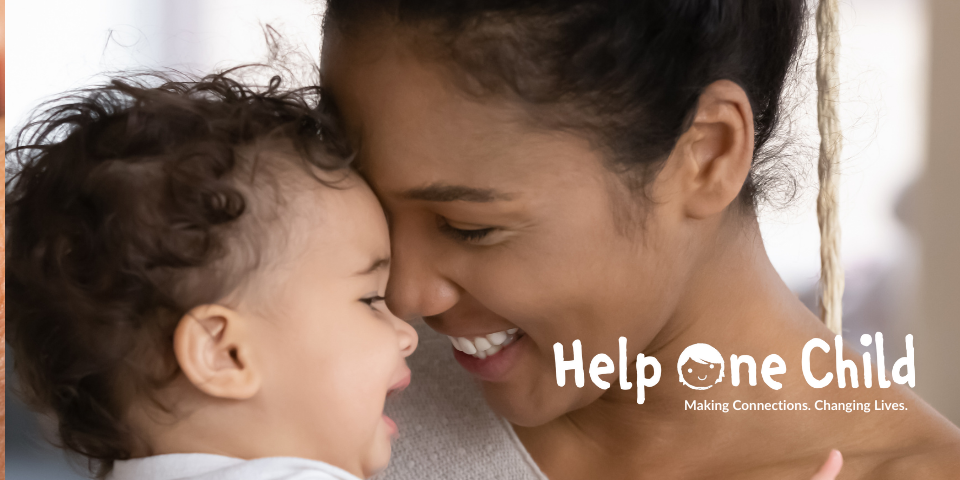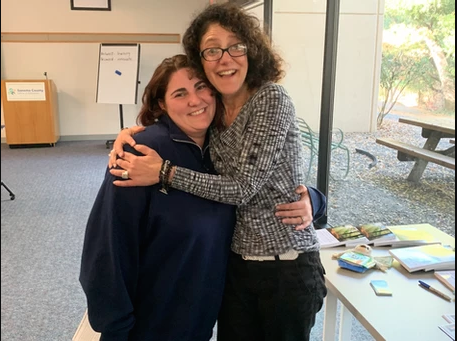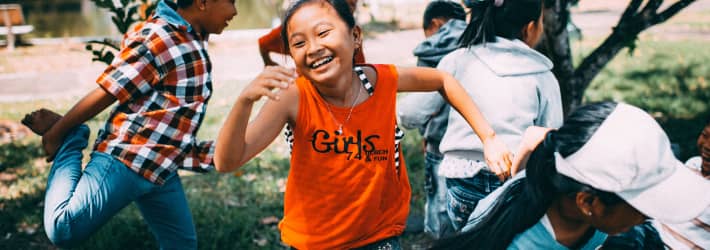Felt Safety Improves Your Child’s Behavior
By Erin Bouchard
We often think as foster and adoptive parents that since our home is safe and our kids are loved they should feel safe. What we fail to recognize is that there is a difference between our kids being safe and feeling safe.
That’s felt safety – when a child feels or perceives that they are safe in their environment.
Our bodies were designed to protect us. Imagine that you’re driving down the road when a car pulls out in front of you. Before having time to think, you swerve out of the way. Your heart rate increases, your hands are sweaty and it takes a few minutes for you to slow your breathing down. That’s your amygdala at work, the region in the brain that functions as a control center for emotions. You didn’t take the time to make a pro/con list or phone a friend. Your brain yelled DANGER and your body reacted.
That’s what our kids do too. Their brains perceive danger and they don’t get a chance to think before acting. Their body moves into protection mode. That protection mode might be running away, exploding in anger, retreating to their room or picking a fight.
How can we help them? We must first see their behavior as a trauma response. Our kids aren’t “trying” to be “bad”. And their behavior is not a result of whether we are a good parent or not.
To break the cycle, our goal as foster and adoptive parents must be to help our kids feel safe. Once they begin to feel safe they become more regulated and begin to train their brains to not sense danger and jump to high alert as frequently.
So how do we help our kids begin to feel safe? Here are three ways:
-
Focus on connection
Foster and adoptive parents have many tasks that call for our attention. We’re busy. Our kid’s needs are often overwhelming and we struggle to know what to prioritize. I believe that we need to prioritize connection. And we may have to adjust our expectations and recognize that there will be some things on our to-do lists that will not get done.
Focusing on connection means being purposeful to find time in our day to be with our kids, so you can:
- listen to them.
- delight in them.
- read with them.
- rock on the chair together.
These little tasks that we do with them all day feed their love tank and help them build attachment to us.
The key is to do these things when our kids become escalated and are nearing a fight/flight response. We need to also be doing this when they are in a calm, regulated state.
-
Meet their needs
This may seem obvious, because we know that as parents we are meeting our kid’s needs. But when a new placement comes into the home or during periods where we are focused on attachment and connection it helps if only the parents meet their child’s needs. This may mean asking friends or family to send our child to us when they are asking for something. It may mean that we don’t rely on our older children in the home to help get a drink or read a bedtime story.
The more our kids realize that we will be there for them, that they’ll always have food, that we’re not going anywhere, the safer they will feel.
-
Tell them they are safe
When our kids are struggling, when they are feeling overwhelmed, it’s helpful for us to tell them that they are safe. We need to stay calm, so we can invite them into our calmness. Whisper to them that they are loved. Proclaim your love. Tuck them into bed at night, no matter how the day went, and let them know that we are so happy to have them in our home.
The more they hear those words, and the more they see our actions match those words, the safer our kids will feel.
The work you are doing matters. The love and safety you are providing to your child is setting them up for success later in life. Sometimes it feels exhausting and it’s hard to see progress. Hang in there. You are doing a good job. You are making a difference in your child’s life. Keep learning and applying new trauma informed parenting so your child’s sense of feeling and beings safe match, so they experience felt safety more frequently.
Erin Bouchard. Author. Speaker. Advocate. Educator. Erin founded Parenting through the Lens of Loss, the Connective Parenting, and the Trauma Informed Parenting FaceBook Group. Erin Bouchard and her husband, husband, Joel have been foster parents since 2011. They adopted out of the foster care system in 2014. They are kinship, foster, adoptive and bio parents. Over the years she has learned a lot through their experiences about early trauma. Erin’s goal is to help foster and adoptive parents learn about the impacts of early trauma. She teaches and educates about connection, attachment, trauma, grief, and loss. Her first book, Trauma Informed Parenting is on the way! Help One Child appreciates her collaboration and contributions with blog article, video usage permission for support group curriculum, and podcast guest appearances.









